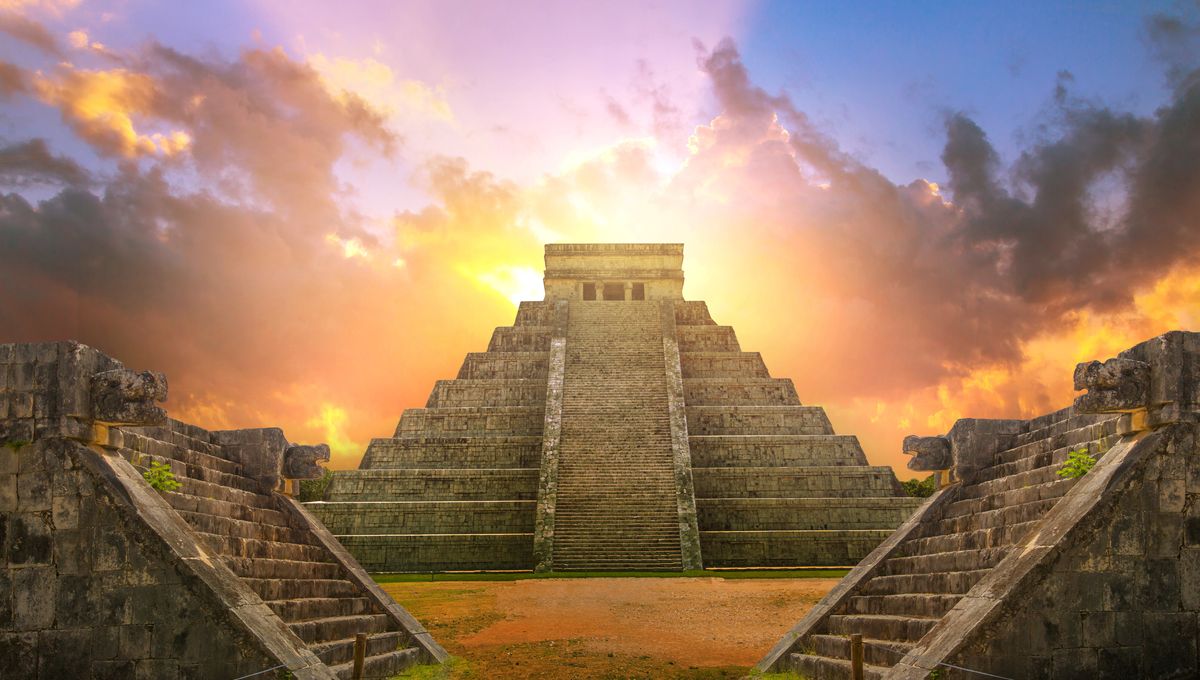
Being born a twin was bad news if you happened to live in ancient Mayan times, as the iconic civilization apparently had a thing for sacrificing relatives, including identical siblings – and especially if they were boys. At the world-famous site of Chichén Itzá in southern Mexico, researchers have just identified the remains of 64 children who were ceremonially dispatched over a period of 500 years, revealing that all were male and several were likely selected due to their close biological kinship with one another.
A major seat of power in pre-Hispanic Mesoamerica, Chichén Itzá is notorious for its bloody traditions, with hundreds of ritually executed children and adolescents having previously been found in a natural sinkhole known as the Sacred Cenote. The majority of these were identified as girls, leading to the theory that the ancient city’s inhabitants were fixated on female sacrifice, although the new research indicates that they had no problem with killing young boys too.
The unfortunate lads were laid to rest in an underground water cistern known as a chultun, which was first discovered by archaeologists in 1967. In total, 106 children were found in the chamber, and the authors of the new study were able to retrieve and analyze DNA from 64 of these.
In doing so, they discovered that all were male and that around a quarter were closely related to at least one other person within the chultun – including two sets of identical twins. “As such twins occur spontaneously in only 0.4 percent of the general population, the presence of two sets of identical twins in the chultún is much higher than would be expected by chance,” write the authors.
Radiocarbon dating indicated that the bones were interred between the 7th and 12th centuries, although the majority were deposited during Chichén Itzá’s 200-year heyday, from roughly 800 to 1000 CE. Isotopic analysis, meanwhile, revealed that related pairs of sacrificial boys shared the same diet, suggesting they probably lived together in the same household.
It’s unclear exactly why twins and other close relatives were chosen, although the researchers note that identical brothers feature prominently in ancient Maya mythology. In particular, the sacred K’iche’ Mayan Book of Council – or Popol Vuh – recounts the story of the “Hero Twins” Hunahpu and Xbalanque, who do battle with the gods through repeated cycles of sacrifice and resurrection, and the slaughter of twin boys at Chichen Itzá may well have represented a ritual enactment of these mythic adventures.
“The similar ages and diets of the male children, their close genetic relatedness, and the fact that they were interred in the same place for more than 200 years point to the chultún as a post-sacrificial burial site, with the sacrificed individuals having been selected for a specific reason,” said study author Oana Del Castillo-Chávez in a statement.
Genetic continuity between the ancient children and present-day Maya communities, meanwhile, indicates that the victims were locals rather than foreigners. At the same time, the researchers gained insight into the lasting impact of disease epidemics caused by early contact with European conquistadores.
It’s thought that these outbreaks during the 16th century ravaged Indigenous populations, with declines of up to 90 percent in some places. The most severe of these was the 1545 cocoliztli pandemic, which was caused by the pathogen Salmonella enterica Paratyphi C.
Comparing modern Maya genomes with the DNA of the sacrificed boys, the researchers found evidence of positive selection in immunity-related genes that provide protection against Salmonella. This indicates that the survivors of these colonial-era pandemics may have been genetically adapted to withstand certain illnesses, later passing on genes that became ubiquitous among future generations.
In other words, as lead author Rodrigo Barquera puts it: “The present-day Maya carry the genetic scars of these colonial-era epidemics.”
The study is published in the journal Nature.
Source Link: Over 60 Sacrificed Ancient Mayan Boys – Including Twins – Found At Chichén Itzá